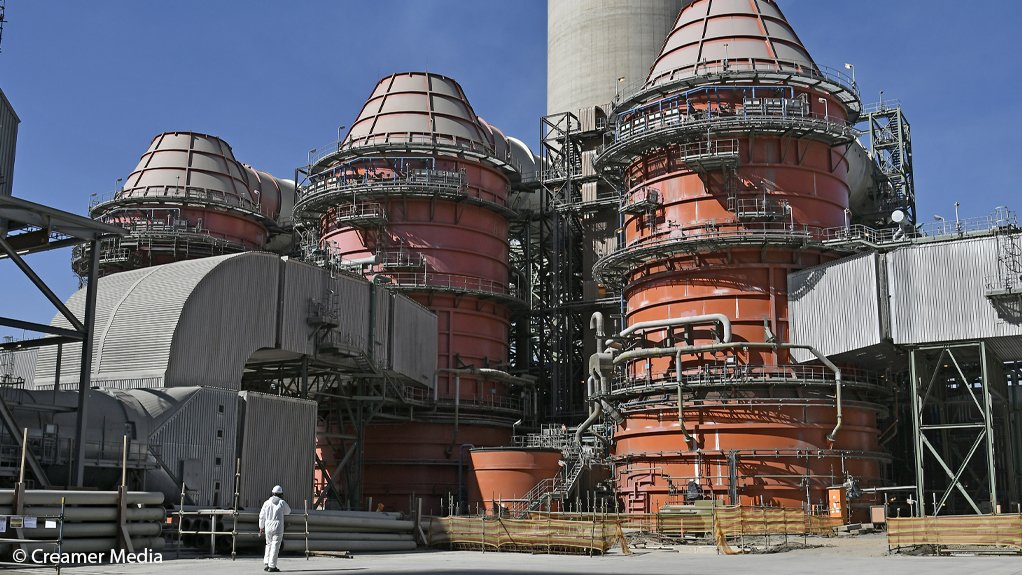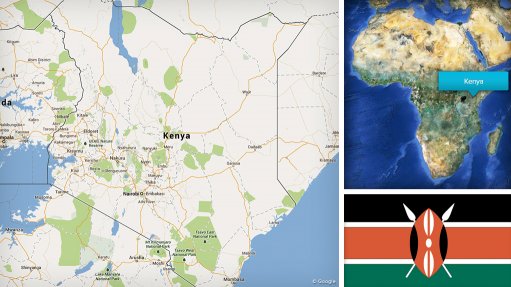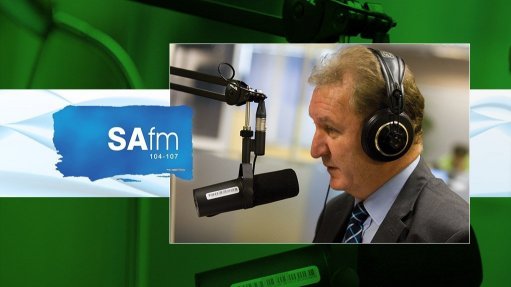Creecy to decide this week on way forward for Kusile exemptions


The temporary stacks would by-pass the flue-gas desulphurisation system (pictured)
Photo by Creamer Media's Donna Slater
The Department of Forestry, Fisheries and the Environment (DFFE) tells Engineering News that Minister Barbara Creecy has received a letter from Eskom requesting her to issue directions in terms of the disaster management regulations to exclude the construction of the temporary stacks at Kusile from environmental requirements.
The state of disaster regulations issued on February 28, include Regulation 5(1)(i) which empowers Creecy to issue directions “excluding upgrades, refurbishments, adjustments and repairs of existing energy infrastructure and existing generation, transmission and distribution facilities” from environmental legislation.
However, both DFFE and Eskom have also confirmed that an alternative proposal was also made by the utility on March 2, whereby exemption from certain requirements of the standard environmental authorisation processes are provided in terms of Section 59 of the National Environmental Management Air Quality Act.
Spokesperson Albi Modise reports that the utility’s request is currently under consideration but indicates that he is unable to immediately outline the process the DFFE will undertake or to provide firm timeframes.
“Minister Creecy met with the legal team [on March 6] and they have committed to giving her advice on the approach to this matter by the end of this week,” Modise says.
Currently only one of Kusile’s four operating units is in service, after the Unit 1 flue duct collapsed on October 23 due to a build-up of slurry. The collapse also compromised the units 2 and 3 flue ducts, which share a chimney with the Unit 1 flue.
The three units, which are able to produce 2 160 MW of electricity, have been inoperable ever since, adding about two stages of loadshedding every time Eskom implements rotational cuts.
A full repair of the damaged west stack, in which the three damaged flues are housed, is expected only in December 2024.
Eskom is, thus, proposing a temporary solution, which it believes will ensure that Kusile is able to be returned to service 13 months earlier, albeit with stacks that by-pass the flue-gas desulphurisation system.
Eskom tells Engineering News that, prior to the March 2 letter to the Minister, it submitted an original application to the DFFE director-general requesting authorisations, exemptions and guidance in respect of the matter on January 30 and supplementary information was also submitted on February 9.
“Eskom has on 3 March 2023 (after it had submitted its letter to the Minister) received revised guidance from the director-general in respect of the way forward in this matter,” Eskom tells Engineering News, adding that it has embarked on the process outlined by the DFFE.
Given the national economic, social and environmental impacts, Eskom is requesting the DFFE to consider an exemption that “balances the potential air quality impacts of the temporary stack project in the area for a limited time against the broader impacts of reduced loadshedding on the people of South Africa under the present state of disaster”.
Eskom has also stressed the urgency of receiving an exemption, warning that without clarity on the legal acceptability of the temporary solution, the placement of critical orders could be delayed.
Should the Minister decide not to grant the requested exemptions, Eskom reports that the process proposed would take until August 2023 to complete.
That said, Concor has already been appointed as the main contractor for the temporary stacks. Installation was subject to approval by the DFFE, however, and no construction could take place prior to such approval.
Eskom insists, too, that the exemptions would be temporary, estimating that the temporary stacks would be employed for about 13 months while the west stack was permanently repaired.
The current plan indicates that the first unit will be available eight months after the environmental exemptions are secured, with the second and third units following in one-month intervals thereafter.
Eskom said the final costs of the temporary and permanent repairs could be established only once the environmental approval has been received and any potential conditions evaluated.
Comments
Press Office
Announcements
What's On
Subscribe to improve your user experience...
Option 1 (equivalent of R125 a month):
Receive a weekly copy of Creamer Media's Engineering News & Mining Weekly magazine
(print copy for those in South Africa and e-magazine for those outside of South Africa)
Receive daily email newsletters
Access to full search results
Access archive of magazine back copies
Access to Projects in Progress
Access to ONE Research Report of your choice in PDF format
Option 2 (equivalent of R375 a month):
All benefits from Option 1
PLUS
Access to Creamer Media's Research Channel Africa for ALL Research Reports, in PDF format, on various industrial and mining sectors
including Electricity; Water; Energy Transition; Hydrogen; Roads, Rail and Ports; Coal; Gold; Platinum; Battery Metals; etc.
Already a subscriber?
Forgotten your password?
Receive weekly copy of Creamer Media's Engineering News & Mining Weekly magazine (print copy for those in South Africa and e-magazine for those outside of South Africa)
➕
Recieve daily email newsletters
➕
Access to full search results
➕
Access archive of magazine back copies
➕
Access to Projects in Progress
➕
Access to ONE Research Report of your choice in PDF format
RESEARCH CHANNEL AFRICA
R4500 (equivalent of R375 a month)
SUBSCRIBEAll benefits from Option 1
➕
Access to Creamer Media's Research Channel Africa for ALL Research Reports on various industrial and mining sectors, in PDF format, including on:
Electricity
➕
Water
➕
Energy Transition
➕
Hydrogen
➕
Roads, Rail and Ports
➕
Coal
➕
Gold
➕
Platinum
➕
Battery Metals
➕
etc.
Receive all benefits from Option 1 or Option 2 delivered to numerous people at your company
➕
Multiple User names and Passwords for simultaneous log-ins
➕
Intranet integration access to all in your organisation


















